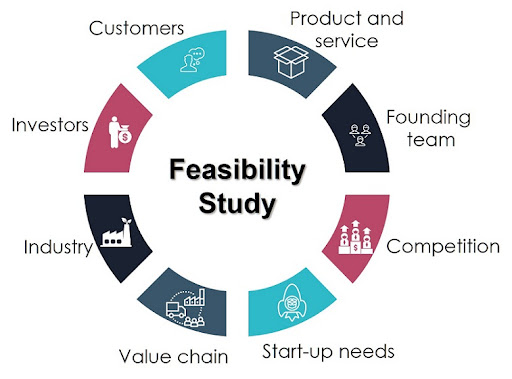Embarking on a new business venture is a monumental decision that requires thorough planning and a realistic assessment of the venture’s viability. Understanding a business’s feasibility minimises risks and paves the way for a structured approach to long-term success. To make a well-informed decision, entrepreneurs and stakeholders must evaluate several critical factors to gauge whether their business idea has the potential to thrive in a competitive market.
This article delves into the most crucial factors to consider when assessing business feasibility. By exploring market demand, financial projections, operational requirements, and more, you can gain the insights needed to make confident, data-driven decisions.
1. Market Demand Analysis

A business’s success largely depends on its ability to meet customer needs. Conducting a thorough market demand analysis helps entrepreneurs understand their target market, customer behaviour, and industry trends.
Understanding the Target Audience
Identifying your target audience involves segmenting the market based on demographics, interests, and purchasing behaviours. The more precisely you can define your ideal customer, your business strategy will be more effective. Consider conducting surveys, interviews, and focus groups to collect feedback from potential customers.
Evaluating Competitors
Researching competitors helps you understand what similar businesses are doing right—and where they may fall short. You can identify opportunities to offer unique value propositions that set your business apart by analysing competitors’ strengths and weaknesses. This insight can also help you determine your pricing strategy and service offerings.
Trends and Growth Potential
Assessing current market trends and future growth potential allows you to forecast demand and predict any shifts in customer behaviour. Understanding trends in consumer preferences, technological advances, or economic factors can help you gauge whether your business idea aligns with the market’s future direction.
2. Financial Viability and Funding
With sound financial planning, even the most promising business idea can continue. Assessing the financial feasibility of your business involves several key steps:
Startup Costs and Break-Even Analysis
Calculating startup costs is fundamental for understanding the initial investment required. This includes infrastructure, technology, marketing, employee salaries, and license expenses. A break-even analysis helps you determine how long it will take to cover these initial costs and start turning a profit.
Revenue Projections
Estimate monthly sales, average transaction value, and profit margins to create realistic revenue projections. Accurate revenue forecasts can help you set achievable goals and ensure cash flow stability.
Funding Requirements and Sources
Identifying potential funding sources is crucial. Determine whether your business will require external financing and, if so, explore your options—such as bank loans, venture capital, angel investors, or personal savings. Evaluating each funding option’s terms, repayment structures, and potential impact on your ownership stake is essential.
3. Legal and Regulatory Considerations

Compliance with legal and regulatory requirements ensures that your business operates within the bounds of the law and avoids potential legal issues down the line. This step often involves:
Business Licensing and Permits
Depending on your industry and location, various licenses and permits may be required. These include general business licenses, health and safety permits, and specific industry-related certifications. Researching and acquiring the necessary documents is essential to launch and sustain your operations legally.
Tax Obligations
Understanding tax obligations is vital for managing financial planning effectively. You may need to register for various taxes, such as income, sales, and employee-related taxes. Consulting a tax advisor can help you avoid penalties and optimise tax efficiencies.
Intellectual Property Protection
Intellectual property protection is essential if your business relies on unique ideas, designs, or technology. Registering trademarks, patents, or copyrights safeguards your business assets and ensures you retain the rights to your innovations.
4. Operational Requirements
Operational planning is crucial to ensuring your business idea is actionable and efficient. Without proper organisation, even the best business concepts may fail to deliver the desired results.
Location and Facilities
Selecting the right location is pivotal, especially for businesses that rely on foot traffic or proximity to suppliers. Consider whether you’ll lease, buy, or operate remotely, and evaluate the associated costs and logistics.
Add Your Heading Text Here
Today’s businesses require robust technology and infrastructure to operate efficiently. Identify the tools and systems you’ll need, such as CRM software, accounting programs, or supply chain management tools. Ensuring seamless operations from the outset will save time and costs in the long term.
Supply Chain and Inventory Management
Effective supply chain and inventory management can prevent costly disruptions. Build relationships with reliable suppliers and consider contingencies for delays or shortages. Inventory management systems can streamline stock levels, reduce waste, and enhance customer satisfaction.
5. Human Resource Requirements

Your workforce is instrumental in bringing your business idea to life. An effective HR plan ensures you have the right talent and resources to support growth.
Staffing and Recruitment Needs
Identify the skills and expertise required for your business and define the roles you need to fill. An effective recruitment strategy can help you attract top talent while aligning with your budget and operational needs.
Training and Development
Investing in employee training and development can significantly impact productivity and morale. This might involve initial training for new hires, ongoing professional development, or leadership training for managers. A well-trained workforce often translates into higher customer satisfaction and operational efficiency.
Workplace Culture and Retention
Establishing a positive workplace culture can improve employee retention and attract skilled professionals. Clear communication, recognition of achievements, and a supportive environment are critical factors in fostering a motivated and dedicated team.
6. Risk Assessment and Management
Every business faces inherent risks, and understanding them enables you to mitigate their potential impact on your operations and finances.
Identifying Potential Risks
Common risks include financial instability, legal issues, supply chain disruptions, and market fluctuations. Conducting a risk assessment allows you to recognise potential vulnerabilities and prepare mitigation strategies.
Developing Contingency Plans
A robust contingency plan involves strategies for responding to unforeseen events. Consider establishing an emergency fund, insurance coverage, and alternative supplier options. Being prepared for the unexpected can protect your business from significant setbacks.
Insurance Requirements
Different types of business insurance, such as liability, property, and workers’ compensation, can protect against various risks. Assess your insurance needs based on your industry and operational model to ensure you’re adequately covered.
7. Marketing and Sales Strategy

A well-defined marketing and sales strategy is essential for reaching your target audience and driving revenue. This strategy should be designed to build brand awareness, attract customers, and generate consistent sales.
Brand Positioning and Unique Selling Proposition (USP)
Your USP is what differentiates you from competitors. By crafting a compelling brand identity and message, you can create a lasting impression on customers and attract loyalty. Consider how your brand story, values, and mission resonate with your audience.
Marketing Channels and Tactics
Identify the marketing channels that align with your target audience, such as social media, email marketing, content marketing, and SEO. A diversified approach can increase your brand’s visibility and reach. Track the performance of each channel and adjust your strategy based on measurable outcomes.
Sales Process and Customer Retention
Define your sales process from lead generation to closing and post-sale follow-up. Focusing on customer retention is as important as attracting new customers. Implement loyalty programs, gather feedback, and provide exceptional customer service to encourage repeat business.
8. Scalability and Long-Term Growth Potential
Assessing your business’s scalability and growth potential ensures that your idea has room for future expansion. This analysis often involves:
Capacity for Expansion
Consider whether your business model can handle increased demand, production, and revenue. Scalability might involve expanding into new markets, diversifying your product line, or establishing partnerships to reach a broader audience.
Sustainability and Innovation
Incorporating sustainability and innovation can strengthen your business’s appeal and long-term prospects. Businesses that prioritise environmental responsibility and adapt to technological advancements are often better positioned for growth.
Adaptability to Market Changes
The business landscape constantly evolves, and flexibility can help you stay competitive. Regularly evaluate industry changes and adjust your strategy accordingly. Being open to innovation and improvements will help your business remain relevant and successful.
Conclusion
Assessing the feasibility of a business idea is a comprehensive process that requires careful consideration of multiple factors. From understanding market demand and ensuring financial stability to developing operational frameworks and identifying potential risks, each element plays a pivotal role in determining the viability of a business venture. By approaching feasibility assessment with a strategic mindset and thorough analysis, you can make informed decisions that pave the way for sustainable success.












